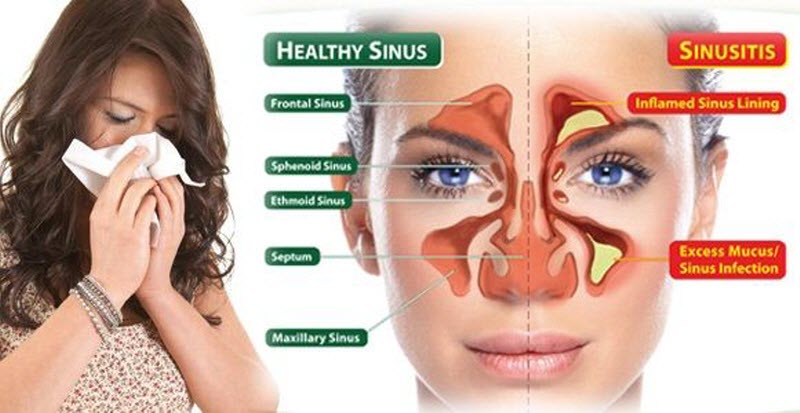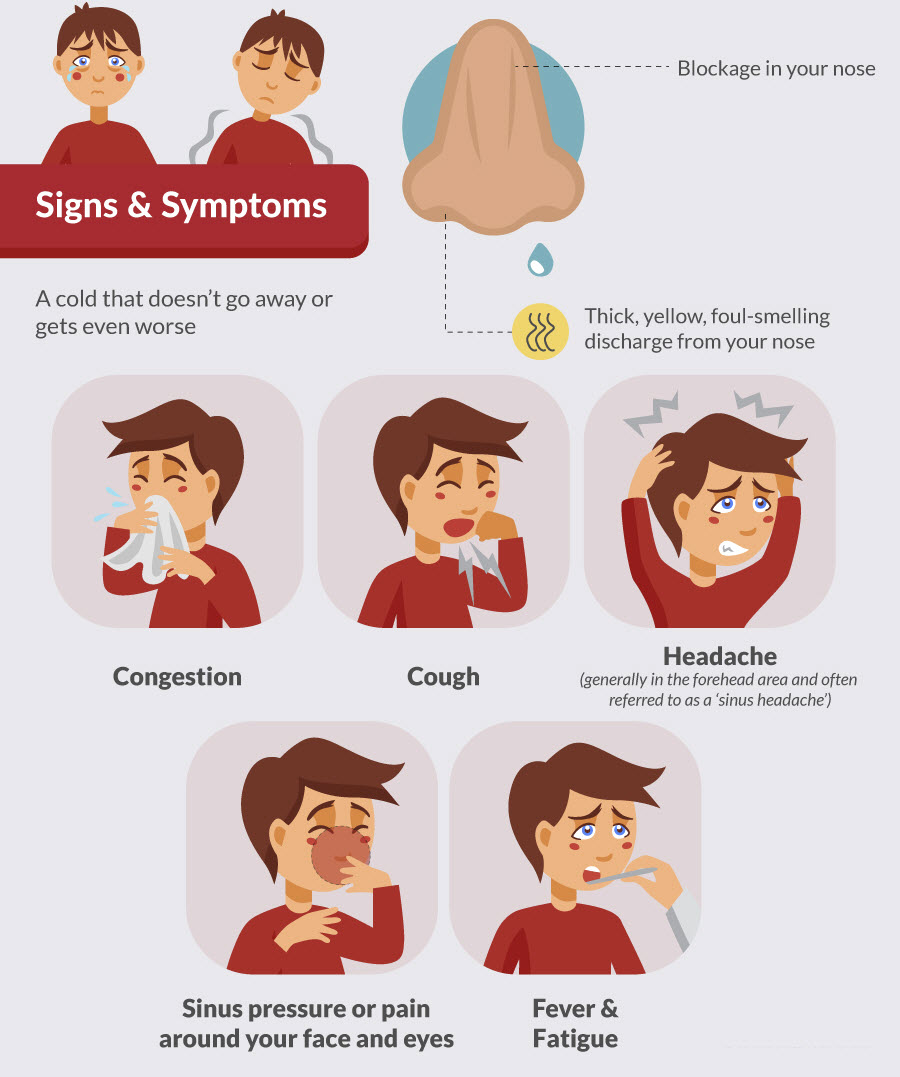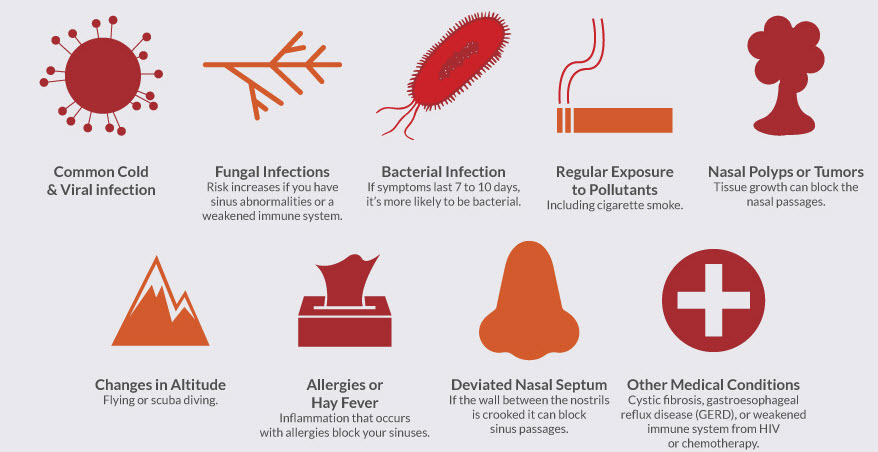This discussion includes the following information related to Acute Sinusitis:
- Sinusitis or Acute Sinusitis or Sinus Infection or Rhino-sinusitis
- Signs and Symptoms of Acute Sinusitis
- Causes of Acute Sinusitis
- Risk Factors for Acute Sinusitis
- Complications of Acute Sinusitis
- Tests and Diagnosis for Acute Sinusitis
- Treatment and Drugs for Acute Sinusitis
Sinusitis or Acute Sinusitis Definition

Acute sinusitis, also known as Acute Rhino-sinusitis, causes the cavities around your nasal passages (sinuses) to become inflamed and swollen. This interferes with drainage and causes mucus to build up.
With acute sinusitis, it may be difficult to breathe through your nose. The area around your eyes and face may feel swollen, and you may have throbbing facial pain or a headache.
Acute sinusitis is most often caused by the common cold. Other triggers include allergies, bacterial and fungal infections. Treatment of acute sinusitis depends on the cause. In most cases, home remedies are all that’s needed. However, persistent sinusitis can lead to serious infections and other complications. Sinusitis that lasts more than eight weeks or keeps coming back is called chronic sinusitis.
Signs and Symptoms of Acute Sinusitis

Acute sinusitis signs and symptoms often include:
- Drainage of a thick, yellow or greenish discharge from the nose or down the back of the throat
- Nasal obstruction or congestion, causing difficulty breathing through your nose
- Pain, tenderness, swelling and pressure around your eyes, cheeks, nose or forehead
- Reduced sense of smell and taste
- Cough, which may be worse at night
Other signs and symptoms can include:
- Ear pain
- Headache
- Aching in your upper jaw and teeth
- Bad breath (halitosis)
- Fatigue
- Fever
EMERGENCY CASE If you have mild symptoms of sinusitis, try self-care. Contact your doctor if you have any of the following: See a doctor immediately if you have signs or symptoms that may indicate a serious infection:
Causes of Acute Sinusitis

When you have sinusitis, the mucous membranes of your nose, sinuses and throat (upper respiratory tract) become inflamed. Swelling obstructs the sinus openings and prevents mucus from draining normally, causing facial pain and other sinusitis symptoms.
Blocked sinuses create a moist environment that makes it easier for infection to take hold. Sinuses that become infected and can’t drain become pus filled, leading to signs and symptoms such as thick, yellow or greenish discharge and other symptoms of infection.
Acute sinusitis can be caused by:
- Viral infection: Most cases of acute sinusitis are caused by the common cold.
- Bacterial infection: When an upper respiratory tract infection persists longer than seven to 10 days, it’s more likely to be caused by a bacterial infection than by a viral infection.
- Fungal infection: You’re at increased risk of a fungal infection if you have sinus abnormalities or a weakened immune system.
Some health conditions can increase your risk of getting a sinus infection that causes sinusitis, or can increase your risk of getting sinusitis that isn’t caused by an underlying infection. These conditions include:
- Allergies such as hay fever. Inflammation that occurs with allergies may block your sinuses.
- Nasal polyps or tumors: These tissue growths may block the nasal passages or sinuses.
- Deviated nasal septum: A crooked septum — the wall between the nostrils — may restrict or block sinus passages.
- Tooth infection: A small number of cases of acute sinusitis are caused by an infected tooth.
- Other medical conditions: The complications of cystic fibrosis, gastroesophageal reflux disease (GERD) or immune system disorders may result in blocked sinuses or an increased risk of infection.


